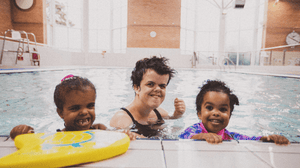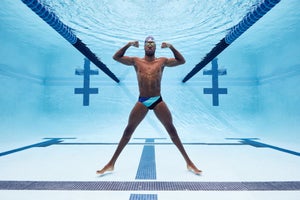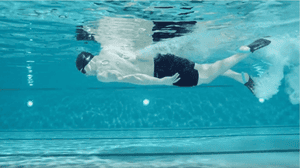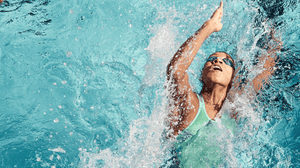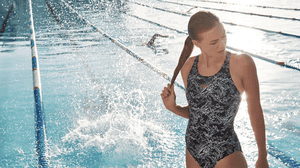
Whether you intend to bring the kids to the beach, or decide to swim in a lake, it’s essential to be prepared for all eventualities. To make sure that everyone enjoys being in and around water, our friends at the Royal Life Saving Society (UK) have come up with a useful ‘SAFE Code’ to help you remember how to check for water hazards, stay informed, and prepare yourself in case of an emergency.
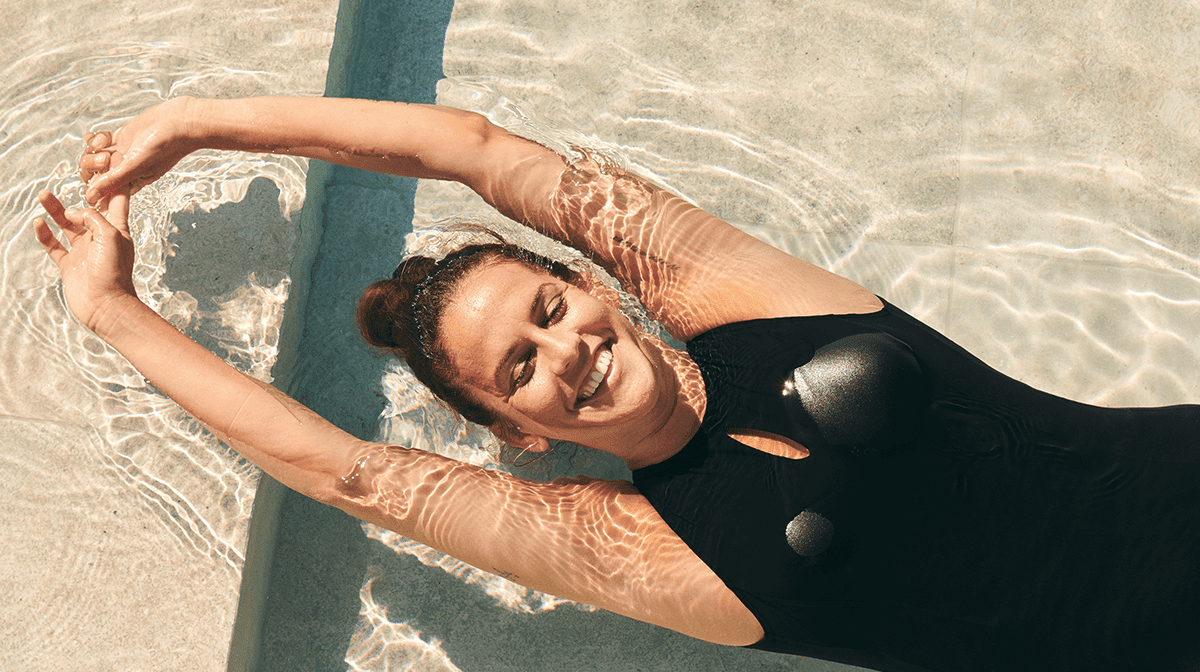
Swimming Safety While On Holiday
Whether you’re splashing in the pool, swimming in a lake or paddling in the sea with your kids, swim safely with these holiday swimming safety tips.
One: Spot
Be vigilant for potential hazards, such as tides or currents. Information about this will be available on nearby notice boards, or online, using certain weather smartphone apps. Keep in mind that there could be hidden dangers underneath the water; for example, tree roots submerged in lakes, or dips on the sea bed at the beach. If you’re at a beach, look for flags to denote where it is safe to swim, and whether or not a lifeguard is on duty. Be careful of unsafe river banks, and stay well back from the water’s edge, in case of unstable terrain. Above all else, make sure that the water itself is suitable for swimming, as polluted water could be very dangerous to one’s health.
Two: Advice
Always take notice of the signs that should be placed near wherever there is an expanse of water. Only swim in areas that have a lifeguard on duty, and wear buoyancy aids and/or life jackets when appropriate. Never allow younger swimmers to use inflatable toys or mattresses instead of lifejackets, and parents & guardians should place their young swimmers under ‘touch supervision’, meaning that the swimming child(ren) should be within arm’s length from the supervising adult. It should go without saying that if you’re supervising young swimmers, other distractions like your mobile phone or laptop need to be put to one side.
Three: Friends
Simply put, there’s strength in numbers. If you swim alone, with no-one else around, then you greatly increase any risk of danger. Make sure to swim with friends or family wherever possible, because they can get help if you ever need it (and similarly, you can be there for them if they ever get into trouble). If you’re travelling to a beach, make sure to swim in the area that is under a lifeguard’s supervision.
Never swim alone in remote areas, because even for the most experienced of swimmers, the risks can be too much – especially in open waters.
Four: Emergency
No-one ever expects an emergency to happen while swimming, but nevertheless, the worst is still possible when you least expect it. Worldwide, drowning is the 3rd leading cause of accidental death in children under 15 years old. Don’t just assume that an accident or emergency will only happen in the sea or in deep water; people can also end up drowning in canals and shallow rivers & streams, garden ponds and paddling pools, especially if they end up in the water unexpectedly.
If you find yourself to be a witness of an emergency, call the state or national emergency services immediately: In European Union countries, the number to call is 112, while the emergency number in North America is 911, and 000 in Australia (a full list of emergency numbers for each country is available here).
Shout loudly to anyone nearby to get help, and alert a lifeguard if one is nearby, but never enter the water on your own to save someone. If you’re able to get hold of the person safely without entering the water, grab the person carefully, or use a safety ring if one is available nearby.
We always want to keep our little ones safe in the water, as well as ourselves. If you’re planning a family day out at the beach, the pool, or by the open water, take a moment to teach younger swimmers about the importance of water safety. For more advice, visit our Water Safety section, or visit the website of RLSS (UK).

Related Articles
